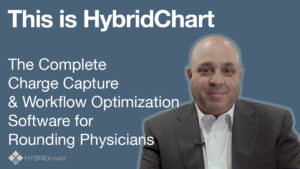Hospitals are well-oiled machines when it comes to providing excellent inpatient care. But as soon as patients leave the hospital, staying on top of managing outcomes becomes more difficult. When factors outside of the hospital’s control influence a patient’s behavior and actions things may not go quite according to plan, and readmission may become necessary.
Hospitals have a powerful incentive to reduce readmissions—a financial incentive. For most hospitals, there is a clear financial incentive to reduce readmission rates—to improve patient care and cut costs and steer clear of financial penalties on hospitals with high readmission rates.
When you are able to identify and implement the right strategies to help the hospitals where you provide services to reduce readmission rates, you will see an increase in clinical excellence and ultimately an improvement in your bottom line.
5 of the Most Effective Strategies to Reduce Readmission Rates
Establish a follow-up plan before discharge.
Do not discharge a patient until a follow-up plan is established. Have an effective discharge process to ensure patient compliance with the care plan.
Learn more about the streamlined and thorough discharge management process with HybridChart
Encourage effective communication.
When coordinating a patient’s discharge, effective communication between physicians and nurses both at the hospital and within your practice is crucial.
Involve the patient’s family, friends and social network.
Hospitals can maximize compliance and reduce the possibility of readmission when patients and the people close to them are engaged and invested in their ongoing care plan. Make sure the patient’s support system are present when providing discharge instructions and that they thoroughly understand.
Understand your patients.
By getting to know your patients, you will be able to learn how to improve their understanding and make patient education as simple for them as possible. This will help to increase their retention of your care plan.
Discharge planning to reduce readmission rates.
HybridChart has an easy, flexible workflow already designed with the patient’s follow-up care in mind. Our system allows providers to identify high risk patients and customize to automatically add specific protocols and processes for following up on these patients so providers have the peace of mind knowing all steps are taken care of appropriately. This feature has helped HybridChart’s customers significantly reduce their readmission rates. One customer was able to reduce hospital readmission rates to 1/3 that of the national average!
While much of the burden for safely sending a patient home, or to long-term care, after their hospital stay falls on the discharge staff at the hospital, you as a provider need a way to ensure proper follow-up is scheduled in your office. As healthcare laws evolve, it becomes increasingly important to ensure you are effectively managing the discharge process to ensure your hospital readmission rates are low. Utilizing these helpful practices to lower readmission rates can help improve patient education and to streamline the discharge process.







